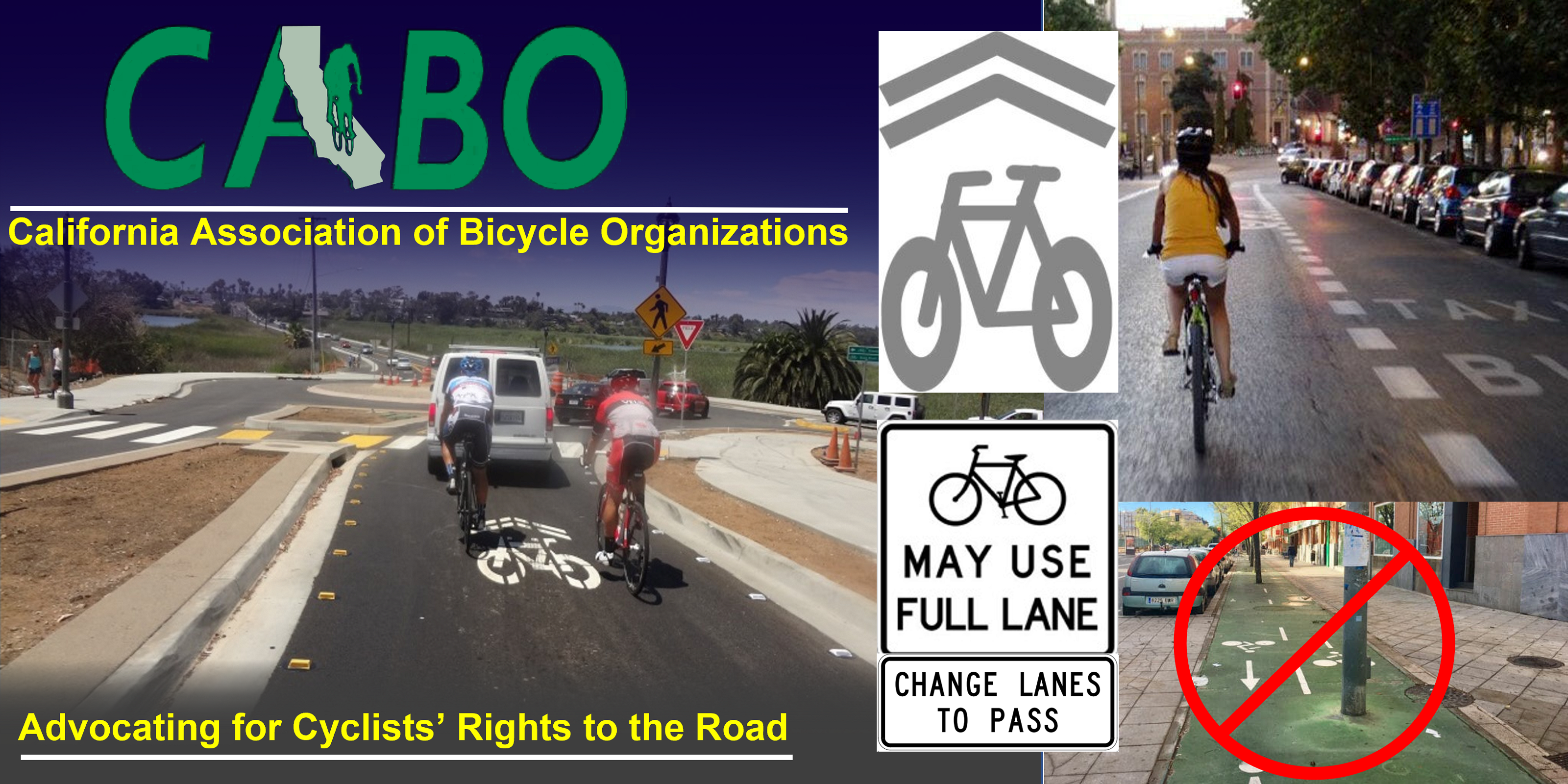Caltrans District 5 asked for comments from bicyclists about their proposal to detour bicycling for TWO YEARS during their US 101 North Paso Rehab Project. Our response is below.
Project Manager Amy Donatello:
I am the President of the California Association of Bicycling Organizations writing to express our surprise and dismay that Caltrans would be considering closing bicycling access - for two years! – along 101 as described for the US 101 North Paso Rehab Project. It is our understanding, and should be yours, that Caltrans does not have the authority to detour bicyclists while allowing motorized traffic through the work zone. Caltrans is supposed to follow Deputy Directive 64 R-2. Caltrans is supposed to consider the needs of bicyclists early in the project development process. Bicycle users and the general public should have been consulted before the traffic management plan was developed, not at this very late stage in the project development process. A staged construction strategy that ignores the rights of people bicycling should not have been approved. Please act within the law, follow Caltrans policy, and provide space for bicyclists on 101 during the project.
Additionally, it is obvious to us that the roads shown on the map (though you didn’t specify a detour route) entail significant out of direction travel, which violates the guidance in PDPM Chapter 31. The only alternative routes we see provide steep grades, narrow or no shoulders & greatly increased distances. Some destinations are only available via 101.
Caltrans staff should not exceed its legal authority. There may be other options to a paved shoulder in some areas, such as providing a 24/7 shuttle service to get bicyclists past these segments, or providing a 16′ wide lane with “share the road” signs, or installing “bikes may use full lane” signs and erecting temporary 40 mph (or lower) speed limit signs on short segments, such as approaches to/on bridges where it could be more difficult (but not impossible) to provide more width for bicycle traffic. All of these options should have been explored during the development of the traffic management plan.
Some of our members have provided some addition comments.
1) Note that the project is in error. There is no access from the east side of the Salinas River (River Road) to the west side via Wellsona Rd. So cutting bicycle access to Highway 101 effectively restricts access to the area south of San Miguel to Wellsona in the Salina River Basin. This includes the lower portion of San Marcos Rd. The Indian Valley—River Rd detour totally bypasses this area. The bike detour must provide access between San Miguel to Wellsona. A possibility would be to provide 2-way access on Cemetery Road west of Highway 101 and create an extension (perhaps a 2-way class I bike facility) from the end of Cemetery Rd to San Marcos Rd and then detouring on San Marcos Road to Wellsona Rd.
2) On the north end, using Indian Valley Road as the detour between Bradley and San Miguel adds additional mileage and significant grades. Far better would be access though Camp Roberts. There may be an almost complete bypass through Camp Roberts, but there are short segments on the Google map shown as unimproved. Also, there appears to be short segment between the south end of Camp Roberts and San Miguel where the only access is Highway 101 (the frontage road on the other side appears to be one-way). If access is granted and made continuous through Camp Roberts and a 2-way connection is enabled between Camp Roberts and San Miguel, then that might fix the north end problem.
3) Why not build one-half of the highway on a new adjacent alignment, rebuild/rehab one of the older alignments and turn the remaining old alignment portion into an paralleling frontage road that would serve the area’s residents and become a nice paralleling bike route. This roadway was built in the early 1960’s by Madonna Construction and as such has outlived its usefulness. Building a new alignment probably would not cost much more than tearing out and replacing miles of old degraded concrete roadway.
4) The national bicycle touring organization, Adventure Cycling, publishes route maps for bicycling tourists that includes the proposed section to be closed. Disrupting this route will inconvenience and perhaps discourage bicycle tourism through our State. If you go forward with this closure they should be notified to alert their member travelers.
Jim Baross
CABO President
